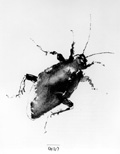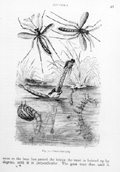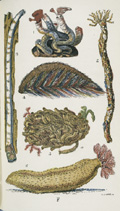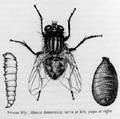|
This rogues’ gallery of unwelcome wildlife includes
rats, mice, cockroaches, fleas, bedbugs, lice, ticks, destructive
moth species, tree borers, House Flies, mosquitoes, and shipworms:
creatures for whom no one, or hardly anyone, has a good word.
Excluded from this inventory are pigeons, House Sparrows,
and Starlings, since these often reviled birds do have legions
of defenders and admirers.
Some "unwelcome neighbors" are annoying pests,
some can spread potentially deadly diseases, some wreak environmental
damage, and some weaken and even destroy urban structures.
"Unwelcome," rather than "bad," is used here to describe these
pests because, although they are certainly "bad" for people,
these animals, like all other creatures (including humans),
seek only to live their lives and reproduce. Each successful
species finds its special niche; unfortunately for us, our
bodies, our foods, our domestic animals, our homes, our crops,
and our cities supply the wherewithal for many creatures to
thrive.
Animal pests tend to be tough survivors, and
attempts at their total eradication are usually fruitless.
Cockroaches develop immunity to pesticides, and indiscriminate
spraying kills not only mosquitoes but also many inoffensive
insects. Even biological approaches, such as the introduction
of an alien predator to control a specific pest, can have
an impact on other species in disastrous and unforeseen ways.
It may be some consolation to know that animal
pests must contend with animal predators of their own. The
notorious Oriental Rat Flea, transmitter of plague, feeds
not only on human blood, but also on that of its host, the
rat. And fleas have their own problems, as the satirist Jonathan
Swift commented in 1733:
So, naturalists observe, a flea
Has smaller fleas that on him prey;
And these have smaller still to bite ’em;
And so proceed ad infinitum....
Check out the sighting
log to record your interaction with some of the native
New York City wildlife featured in Urban Neighbors.
You may also browse the sighting log by animal, borough, park
or natural area, and/or habitat to view a sighting you have
submitted or to read others’ observations.
|
1

Norway Rat / NYPL
2

Cockroach
/ NYPL
3

Mosquito / NYPL
4
 Common
Shipworm / NYPL
Common
Shipworm / NYPL
5

House Fly / NYPL
|






